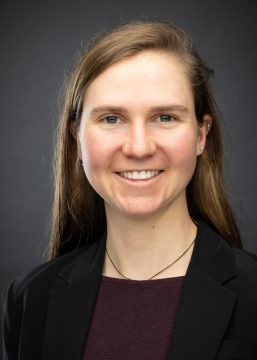A study led by Geisel School of Medicine fourth-year student Lucy Skinner ’23, MPH ’21, found that female physicians with children earn on average $3.1 million less than male physicians with children over a 40-year career.
The paper, “Marriage, Children, and Sex-Based Differences in Physician Hours and Income", published in JAMA Health Forum, uses data on U.S. physicians from 2005-2019 and concludes that marriage and children were associated with a greater earnings penalty for female physicians compared with male physicians—an earnings gap has not changed significantly since 2005.

“Our study shows that female physicians earn less per hour compared to their male counterparts, and if they choose to get married or have children, we see a reduction in work hours which further widens the sex-based earnings gap,” Skinner, the lead author, explains. “Female physicians with children earn on average $3 million less than male physicians with children over their career.”
Skinner notes it is important for employers to address the sex-based earnings gaps in their institutions, to acknowledge the role of structural sexism and gender norms in the medical system, and to consider initiatives to support both female and male physicians in childcare tasks.
As women increasingly enter the physician workforce, and older physicians retire over the coming decades, addressing the barriers that lead to women working fewer hours may contribute to a reduction in the male-female earnings gap while helping to expand the effective physician workforce, she says.
The authors suggest that female physicians should be supported through initiatives such as increasing childcare access at work and increased maternity and paternity leave to help relieve the pressures of childcare enabling women to work the hours they choose, while ensuring that female physicians receive pay commensurate to hours worked as women increasingly chose previously male-dominated specialties.
According to co-author Douglas O. Staiger, PhD, “Women now account for roughly half of students graduating from medical, law and business schools, yet still earn far less than men in these professions. Our study adds to the evidence suggesting that social norms regarding the roles of men and women at home play an important role in explaining earnings gaps, even for professional women.” Staiger is the John Sloan Dickey Third Century Professor in Dartmouth’s Department of Economics and an adjunct professor of The Dartmouth Institute for Health Policy and Clinical Practice
Skinner’ interest in this issue began in 2019 as a summer research project. “This topic is especially interesting to me as a woman in medicine because I have seen and experienced the structural sexism within medical training and practice, and I am inspired to be a voice for equity.
“The phenomenon of a sex-based marriage penalty and child penalty—meaning that women earn less when they get married and have children compared to men in the same occupation—exists in other industries such as business and law. Doug Staiger, Peter Buerhaus, and Dave Auerbach, who I previously worked with during my summer research position at Montana State University, thought it would be interesting to see if this effect was true for physicians as well,” she says.
“I have been working with Lucy for six years on a variety of projects about the healthcare workforce, co-authoring six papers together. Lucy was lead author on two of them—one in the New England Journal of Medicine on the implications of an aging rural physician workforce, and the current paper on sex-based differences in physician hours and income,” Staiger says. “Lucy took the lead on every aspect of these papers, from framing the question and analyzing the data to drafting the manuscript. As a medical student entering rural medicine, she has a great knack for identifying important research questions about the physician workforce.”